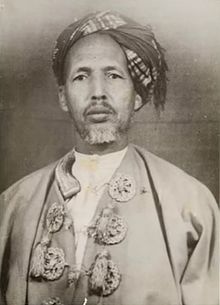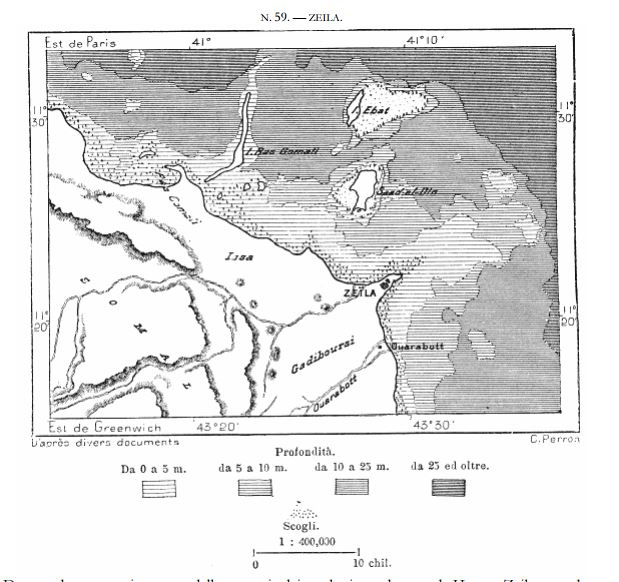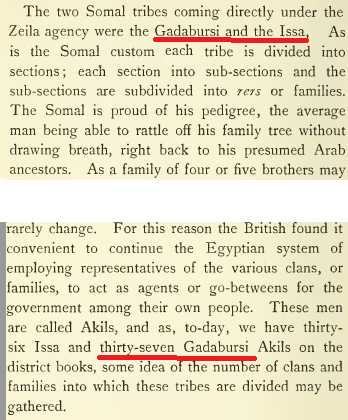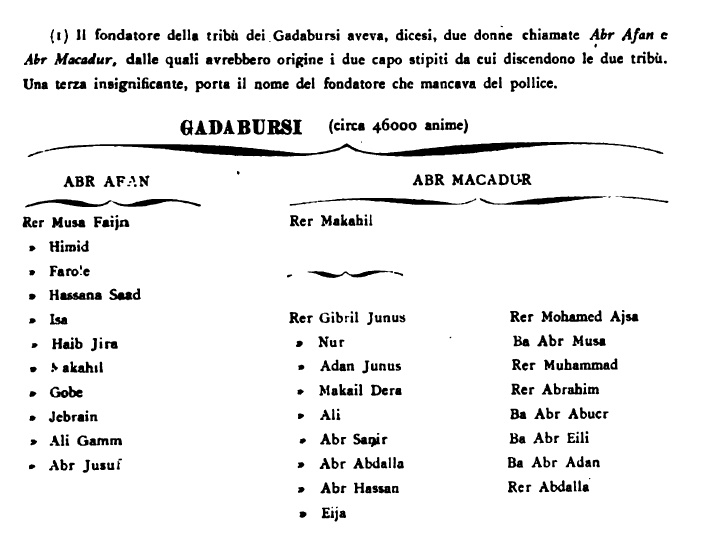https://historyinthehorn.wordpress.com/2012/11/13/the-zeila-golden-age/
The Zeila Golden Age
November 13, 2012 James Dahl Leave a comment
"When pirates from Adulis and the Dahlak Islands attacked Jedda in 714, the ageing Khalifa al-Walid ibn Abd al-Malik ordered an expedition against the lawless coast of the Aksumite Empire, which had collapsed into civil war between the two sons of Negus Kaleb, the jewish son Yisrael and the christian son Gabra Masqal. Beja nomads had already taken over most of northern Eritrea and the ancient supply port of Suakin by this time.
The forces of the Khalifa encountered virtually no resistance and the ancient port of Adulis and the Dahlak islands were captured. The Islamic Empire was at this time locked in a struggle with the Byzantine Empire (at the time still very strong and determined to recapture Egypt and Syria) and spent minimal resources on their new African territories, primarily using it as a place of exile. Adulis at this time was abandoned and a new port built at Massawa primarily for Hajj pilgrims, but the Khalifa did not rebuild Aksum’s old dominance over the Myrrh and exotic goods trade. Instead, Massawa’s primary industry was the slave trade, purchasing slaves from inland (probably captured in war by the various combatants in the Aksumite collapse) and selling them in Arabia.
Thus, Zeila entered the scene. In the centuries prior to Aksum’s rise to dominance over the African Red Sea Coast, there had been a number of ports here selling various exotic goods, but Aksum had controlled the trade in Myrrh for hundreds of years, but with Aksum in turmoil and Adulis abandoned, merchants sailed through the Bab al-Mandeb to Zeila.
After the abandonment of Adulis and Aksum, Habesha society had dissolved into a feudal system of warlords on fortified Amba forts scattered across the highlands, Christians in the east, Jews in the west, and the Sidama to the south, some of whom were becoming Muslims such as the Hadiya of Shewa. The Christians were not themselves united, with the Tigray Bahr Negus in the north, and the Amhara Negus in the west, and the Agaw Christians of Bugna in the east. There would be chaos for centuries until the so-called Zagwe dynasty established their authority over Aksum around the year 1000. The Amhara and Agaw, instead of braving the journey through a lawless country and 3 or 4 different kingdoms to get to Massawa, opted instead to simply journey across the Danakil Depression to the port of Zeila. Thus, Zeila rose to prominence as a major trade center.
With a rapid rise in merchants passing through the port, much as it did throughout the Indian ocean, Islam spread out from Zeila and the nearby inland people began becoming Muslims such as the Argobba, who became Muslim in 1108. Other southern tribes like the Hadiya followed suit soon after, introducing a fourth dimension to the already complicated religious landscape of Ethiopia.
The Zagwe retained many of the Aksumite state characteristics, they were primarily concerned with trade and stability, though Emperor Lalibela sent at least one expedition into Gojjam against the Jewish lords of Gojjam, which was the first significant victory for the Christian faction since Queen Gudit was driven from Aksum in 980. Things rapidly changed though when the border lord of Shewa, Yekuno Amlak, overthrew the Zagwe and established a completely military society. Fixed capitals were abandoned, civic society was abandoned, and the Habesha kingdom became more of an armed camp. The so-called Solomonic dynasty began a campaign of conquest which began with Muslims to their south, then the Jews to the east, and continued right up until the 20th century when they invaded the Ogaden plateau.
Emperor Tewodros in 1404 declared the muslims “Enemies of the Lord” and invaded the Muslim lands, intent on capturing Zeila. While the Solomonic Armies were successful in capturing Zeila, Tewodros was killed in battle with Ifat. His successor Yeshaq would turn away from Zeila and invade the Jewish lands of Gojjam, going so far as to invade Shanqella lands beneath the highlands. This gave the sons of Sultan Sa’ad ad-Din of Ifat the chance to recapture Zeila, which they succeeded in doing in 1415. Yeshaq tried to form an alliance with the Kingdom of Aragon in 1428 against Ifat, but it would be over a century before European assistance arrived for the Solomonic kings. When Adal was defeated in 1517, the Portuguese sacked Zeila, and the Portuguese seized control of the trade routes of the Red Sea. Zeila declined and by 1630 it was a vassal of Yemen, it would never reclaim it’s former glory."
The Zeila Golden Age
November 13, 2012 James Dahl Leave a comment
"When pirates from Adulis and the Dahlak Islands attacked Jedda in 714, the ageing Khalifa al-Walid ibn Abd al-Malik ordered an expedition against the lawless coast of the Aksumite Empire, which had collapsed into civil war between the two sons of Negus Kaleb, the jewish son Yisrael and the christian son Gabra Masqal. Beja nomads had already taken over most of northern Eritrea and the ancient supply port of Suakin by this time.
The forces of the Khalifa encountered virtually no resistance and the ancient port of Adulis and the Dahlak islands were captured. The Islamic Empire was at this time locked in a struggle with the Byzantine Empire (at the time still very strong and determined to recapture Egypt and Syria) and spent minimal resources on their new African territories, primarily using it as a place of exile. Adulis at this time was abandoned and a new port built at Massawa primarily for Hajj pilgrims, but the Khalifa did not rebuild Aksum’s old dominance over the Myrrh and exotic goods trade. Instead, Massawa’s primary industry was the slave trade, purchasing slaves from inland (probably captured in war by the various combatants in the Aksumite collapse) and selling them in Arabia.
Thus, Zeila entered the scene. In the centuries prior to Aksum’s rise to dominance over the African Red Sea Coast, there had been a number of ports here selling various exotic goods, but Aksum had controlled the trade in Myrrh for hundreds of years, but with Aksum in turmoil and Adulis abandoned, merchants sailed through the Bab al-Mandeb to Zeila.
After the abandonment of Adulis and Aksum, Habesha society had dissolved into a feudal system of warlords on fortified Amba forts scattered across the highlands, Christians in the east, Jews in the west, and the Sidama to the south, some of whom were becoming Muslims such as the Hadiya of Shewa. The Christians were not themselves united, with the Tigray Bahr Negus in the north, and the Amhara Negus in the west, and the Agaw Christians of Bugna in the east. There would be chaos for centuries until the so-called Zagwe dynasty established their authority over Aksum around the year 1000. The Amhara and Agaw, instead of braving the journey through a lawless country and 3 or 4 different kingdoms to get to Massawa, opted instead to simply journey across the Danakil Depression to the port of Zeila. Thus, Zeila rose to prominence as a major trade center.
With a rapid rise in merchants passing through the port, much as it did throughout the Indian ocean, Islam spread out from Zeila and the nearby inland people began becoming Muslims such as the Argobba, who became Muslim in 1108. Other southern tribes like the Hadiya followed suit soon after, introducing a fourth dimension to the already complicated religious landscape of Ethiopia.
The Zagwe retained many of the Aksumite state characteristics, they were primarily concerned with trade and stability, though Emperor Lalibela sent at least one expedition into Gojjam against the Jewish lords of Gojjam, which was the first significant victory for the Christian faction since Queen Gudit was driven from Aksum in 980. Things rapidly changed though when the border lord of Shewa, Yekuno Amlak, overthrew the Zagwe and established a completely military society. Fixed capitals were abandoned, civic society was abandoned, and the Habesha kingdom became more of an armed camp. The so-called Solomonic dynasty began a campaign of conquest which began with Muslims to their south, then the Jews to the east, and continued right up until the 20th century when they invaded the Ogaden plateau.
Emperor Tewodros in 1404 declared the muslims “Enemies of the Lord” and invaded the Muslim lands, intent on capturing Zeila. While the Solomonic Armies were successful in capturing Zeila, Tewodros was killed in battle with Ifat. His successor Yeshaq would turn away from Zeila and invade the Jewish lands of Gojjam, going so far as to invade Shanqella lands beneath the highlands. This gave the sons of Sultan Sa’ad ad-Din of Ifat the chance to recapture Zeila, which they succeeded in doing in 1415. Yeshaq tried to form an alliance with the Kingdom of Aragon in 1428 against Ifat, but it would be over a century before European assistance arrived for the Solomonic kings. When Adal was defeated in 1517, the Portuguese sacked Zeila, and the Portuguese seized control of the trade routes of the Red Sea. Zeila declined and by 1630 it was a vassal of Yemen, it would never reclaim it’s former glory."
Last edited:










